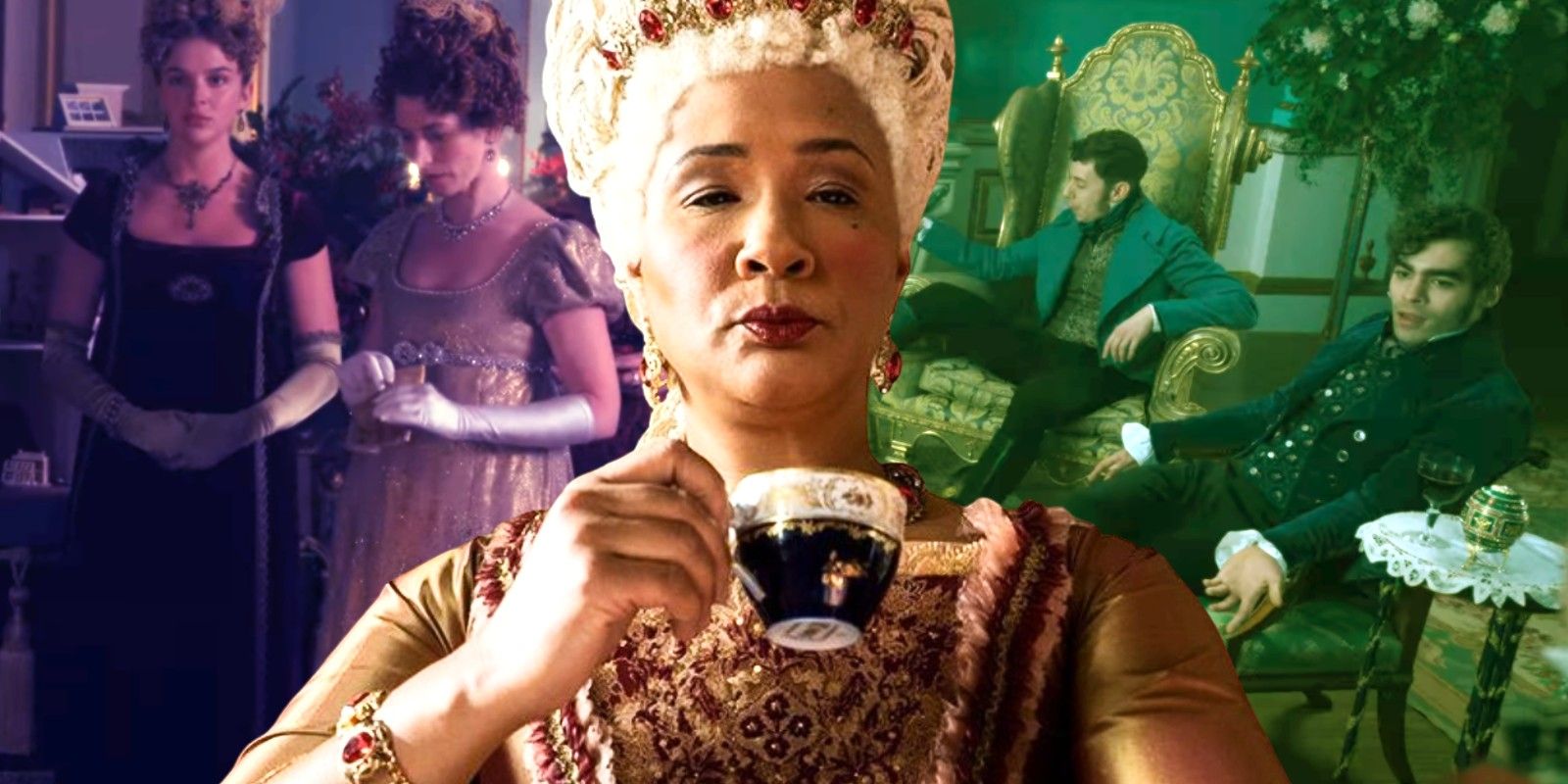Bridgerton initially mentioned Queen Charlotte’s many children – and prequel Queen Charlotte finally reveals them – but what happened to them? Queen Charlotte is based on the real-life monarch who lived during the Regency era in which Bridgerton is set. The Netflix series makes a great deal of her early courtship and romance with her husband, King George III, but Bridgerton conspicuously avoided telling their story.
Queen Charlotte finally introduces King George and Charlotte’s children in the future-set sequences that follow Bridgerton season 2 answer why they’re missing from Bridgerton. The children simply do not fit with Queen Charlotte’s projection of herself as match-maker and chooser of Incomparables. She shapes the culture of the ton, but seemingly struggles to keep her own familuy in order. But how much of Queen Charlotte‘s presentation of the royal children is actually true?
Queen Charlotte’s True Story: What Happened To Her Children?
Just like in Bridgerton and its prequel, Queen Charlotte and King George III had 15 children together in real life. However, their children, all adults by the time Bridgerton begins in 1813, have never appeared onscreen. They are mentioned — like in season 2, when Queen Charlotte says she ran out of ideas for naming her zebras after naming all 15 children — but there is no inkling as to what they’re up to at all, who they’re married to, and where they are.
Rather, Queen Charlotte and King George III’s nephew, Prince Friedrich of Prussia, is the sole relative to visit his family in London. In season 1, audiences learn that one of their children, a daughter named Amelia, became ill and died. Amelia is also the only one of their children who is mentioned by name. There were so many of them that it’s likely Bridgerton didn’t want to take away the focus from the main characters of the show to give screen time to members of the monarchy beyond Queen Charlotte herself.
In reality, 13 of Queen Charlotte and King George III’s 15 children lived to adulthood, including Amelia, who died at 27 from tuberculosis. Princes Octavius and Alfred died from smallpox at ages four and two, respectively. The remaining children — George IV, Prince Frederick, William IV, Charlotte, Prince Edward, Princess Augusta Sophia, Elizabeth, Ernest Augustus, Prince Augustus Frederick, Prince Adolphus, Princess Mary, and Princess Sophia — didn’t have as much luck in love as their parents did. Many of them, including George IV and Prince Frederick, disliked their wives. George IV would go on to become the prince regent, ruling in his father’s place when he could no longer do so due to his mental health. He became king in 1820 until his death in 1830.
Meanwhile, King George didn’t want his daughters to get married because he didn’t want them to be in bad relationships and he disapproved of anyone trying to propose to them. Prince Edward would become father to Queen Victoria, who would go on to inherit the throne after her uncle, William IV, died in 1837 with no heirs. A couple of Charlotte and George III’s sons, including Prince Adolphus, enlisted in the military and was dutiful to his responsibilities as a monarch.
Princess Mary was one of the only royal children who would have been at the palace during Bridgerton’s timeline. She was very much a caretaker who looked after King George III when he became ill, as well as her sister Amelia when she got sick. She was the last of her siblings to die in 1857. Princess Sophia was Queen Charlotte’s companion, so she would have also been at the palace beside her mother, though the Netflix series refrains from showing either her or Mary.
How Queen Charlotte Changes The True Story Of Her Children’s Lives
Queen Charlotte does follow true history by having only 12 of George and Charlotte’s children alive in 1815, but it makes significant changes to some of the characters, largely in the name of comedy. The Bridgerton prequel opens with the death of Princess Charlotte of Wales, the only daughter of Charlotte’s son, George, who would go on to become King George IV. This actually happened several years later (in 1817). George’s emotional reaction is clearly an allusion to King George IV’s perceived unsuitability to reign and tendency to scandal. As in Queen Charlotte, George had many mistresses, and was rumored to have 5 illegitimate children.
Queen Charlotte mentions many illegitimate children sired by her sons, and the true story behind the show reveals that her son William (later King William IV after George IV’s death) was survived by 8 of his 10 illegitimate offspring. They were the product of a relationship with actress Dorothea Jordan, who is mentioned in Queen Charlotte at one point as too low-born to be a marriage option. Other legitimate grandchildren would follow, including, of course, Queen Victoria, but not until years after the Bridgerton-era sequences in Queen Charlotte.
Not all of Queen Charlotte’s children were disappointments, despite how they’re portrayed. Princess Mary was a key part of Kimg George’s tragic story, and Prince Augustus was a progressive liberal who played a part in important reform of Parliament, the abolition of the slave trade, and the removal of civil restrictions on Jews. They weren’t, as Queen Charlotte calls them all at one point, just virgins or whores.
Despite having 15 children, Bridgerton kept Queen Charlotte as a solitary monarch who interacts primarily with the ton. At that point, the children would have been a distraction. After all, Bridgerton is about the titular family and each of the eight siblings’ respective romantic partners. Adding in another 13 potential relationships would have been a strain on the rest of the story. But the chance to see their stories told in Queen Charlotte fills in important gaps, even if the show takes historical liberties.




